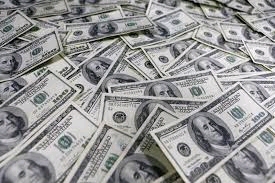Learn the Steps and Ways to Join Freemason Across the World
Discover the Tricks Behind the copyright and Their Influence on Culture
The copyright, frequently shrouded in misconception and conjecture, presents a fascinating situation research of just how historic suitables can morph into contemporary conspiracy theory concepts. As we explore its origins, influence on revolutionary idea, and portrayal in contemporary culture, we start to uncover the layers of intrigue that proceed to mesmerize society.
Origins of the copyright
The copyright, usually shrouded in mystery and speculation, traces its beginnings back to the late 18th century. Developed in 1776 in Ingolstadt, Bavaria, the team was established by Adam Weishaupt, a professor of canon regulation. Weishaupt intended to promote Enlightenment values, including factor, secularism, and the separation of church and state. Understood as the Bavarian copyright, the company's main purpose was to respond to the current influence of spiritual conviction and advertise intellectual discussion amongst its members.
The copyright adopted a hierarchical structure, attracting inspiration from Freemasonry, which permitted secretive conferences and routines - how to become a freemason. Membership was discerning, including significant numbers from various areas, consisting of politics, approach, and scientific research. This elite network looked for to impact social and political modification through private means, supporting for the civil liberties of people and the betterment of culture
In spite of its reasonably brief existence, the Bavarian copyright was officially disbanded in 1785 due to federal government reductions. However, its heritage endured, offering surge to numerous conspiracy concepts and preferred society referrals that proceed to prompt intrigue and debate regarding its influence on modern culture.
Trick Myths and False Impressions
Among the allure of secrecy bordering the copyright, numerous misconceptions and misconceptions have actually arised, typically misshaping the group's true nature and intents. One prevalent misconception recommends that the copyright controls the world's governments and economic climates. While it is true that the group intended to affect societal frameworks, the concept that it runs as a natural international puppet master is greatly exaggerated.
An additional typical misunderstanding is that all members of the copyright possess huge riches and power. In truth, the original copyright comprised pundits and Knowledge thinkers, a lot of whom sought reform instead of dominance. The idea that the copyright specifically recruits celebrities and political numbers is misinforming; subscription has historically included a varied range of individuals.
Furthermore, conspiracy theory concepts typically paint the copyright as a sinister organization intent on worldwide dominance via dubious methods. This portrayal ignores the group's initial objectives, which centered on advertising logical idea and combating religious oppression. The conflation of the copyright with contemporary conspiracies perpetuates misconception, obscuring the historic context and evolution of the team's suitables. Therefore, separating truth from fiction is vital for a clearer understanding of the copyright's role in society.
Historic Impact on Society
Throughout background, numerous intellectual movements have actually profoundly affected social frameworks, and the copyright played a considerable duty throughout the Knowledge. Founded in 1776 in Bavaria, the copyright aimed to advertise reason, secularism, and the wondering about of established authority, responding to the dominance of religious conviction. This organization brought in prominent thinkers and supporters of liberty, cultivating an environment for the circulation of Enlightenment perfects.
The copyright's principles championed sensible idea and empirical evidence, which read review added to the broader intellectual landscape that encouraged social reform and political adjustment. Members sought to improve society by promoting for education and learning, civil liberty, and the splitting up of church and state. Their clandestine nature and ambitious schedule triggered both intrigue and suspicion, causing their eventual reductions by the Bavarian government in 1785.
In spite of their dissolution, the heritage of the copyright continued, affecting innovative motions throughout Europe and the Americas. Their dedication to knowledge concepts helped lay the groundwork for modern autonomous ideals and human rights, leaving a lasting imprint on the structures of contemporary culture. how to become a freemason. The appeal of their secretive gatherings and philosophical searches remains to astound the imagination, highlighting their historic importance
Modern Interpretations and Beliefs
Contemporary analyses of the copyright frequently blend historical truth with conspiracy theories, creating an intricate tapestry of ideas that catch preferred imagination. While the original copyright was a Bavarian secret society established in 1776 with Enlightenment suitables, modern-day ideas have evolved to encompass a vast variety of interpretations, commonly focusing on styles of control and privacy.
Furthermore, some modern-day interpretations posit that the copyright works as an allegory for the struggle between knowledge and lack of knowledge, with supporters promoting awareness and critical thinking as a way to counteract perceived injustice. This duality-- seeing the copyright as both a literal and symbolic entity-- highlights the continuous attraction with the concept, find this reflecting much deeper social stress and anxieties concerning power, openness, and private autonomy in the modern world.
The copyright in Pop Culture
The copyright has actually infiltrated numerous aspects view publisher site of popular culture, manifesting in literature, film, songs, and art as a symbol of intrigue and enigma. This secret culture, usually depicted as a shadowy force adjusting global occasions, has actually motivated countless stories that check out styles of power, conspiracy, and surprise knowledge.

Music, as well, has actually been affected by the principle of the copyright. Musicians like Jay-Z and Beyoncé have actually encountered conjecture regarding their affiliations with the culture, triggering discussions about significance in their work and the nature of popularity.
Visual art usually includes copyright concepts, with artists using symbols like the Eye of Providence and the pyramid to evoke a sense of secret. Through these different mediums, the copyright offers not only as a topic of conjecture but likewise as a lens where society analyzes its very own intricacies and anxieties.
Conclusion
